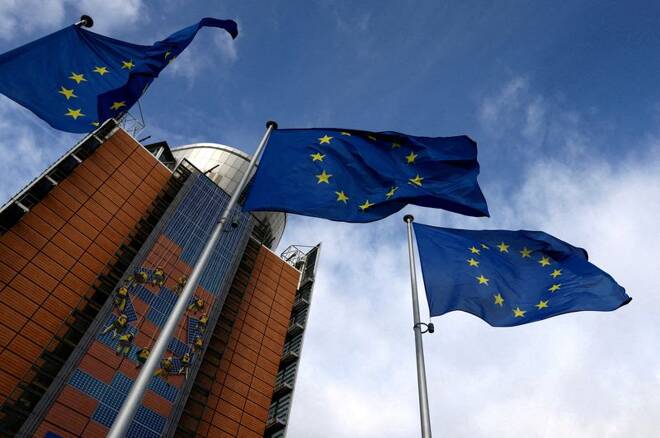Advertisement
Advertisement
EU ready to accept countries’ own fiscal tightening goals for 2024
By:
BRUSSELS (Reuters) - The European Commission is likely to propose on Wednesday that EU governments set their own deficit-cutting goals when they prepare draft budgets for 2024, pushing ahead with its idea of country-specific debt reduction paths, an EU official said.
By Jan Strupczewski
BRUSSELS (Reuters) -The European Commission said on Wednesday it would back any fiscal tightening goals for 2024 by EU governments as long as plans ensured public debt was at a “prudent” level, providing more flexibility than its prior one-size-fits-all approach.
The guidance of the Commission, the EU’s executive arm, is part of its efforts to coordinate budget tightening policies in the 27-nation bloc, so as not to go against the European Central Bank’s plan to bring down inflation, while at the same time differentiating between countries with high and low debt.
Countries will also need to ensure the budget deficit eventually falls to within EU limits.
The extra leeway for EU governments to set their own targets depending on the level of debt is a departure from previous practice when EU rules determined the minimum size of budgetary tightening necessary every year.
“The 2024 guidance should be seen as a bridge: between how the rules have worked in the past and how they may work in the future,” Commission Vice President Valdis Dombrovskis told a news conference.
Until the outbreak of the COVID-19 pandemic in 2020, EU governments all had to follow a common set of fiscal rules to cut debt by 1/20th of the excess over 60% of GDP every year and keep budget deficits below 3% of GDP.
But the rules were suspended during the pandemic and then again in 2022 because of the economic shock caused by the Russian invasion of Ukraine. The large differences in debt levels between countries after the pandemic made a uniform application of debt cutting rules across the bloc unrealistic.
With the old rules set to come back into force in 2024, EU governments are now racing to work out, by the end of the year, new ones that better reflect the challenges of high public debt and the need for large investment linked to fighting climate change.
The Commission proposed in November to negotiate individual debt reduction paths with each country and grant extra time if a government was implementing reforms, or investment that is in line with EU priorities.
Germany and some other northern European countries are sceptical, but the Commission said it would push ahead with this idea when it issues its annual country-specific recommendations on fiscal policy to each EU country in May.
“Our (fiscal tightening) proposals for 2024 will be quantified and differentiated based on each country’s public debt challenges. They will be based on the fiscal targets set out by each Member State, provided that they comply with all requirements,” Dombrovskis said.
Fiscal tightening was necessary, the Commission said, because the pandemic was over and energy prices were falling, making it unnecessary for governments to continue with broad fiscal support measures for companies and households.
With the EU labour market very tight, continued fiscal stimulus would only work to fuel inflation rather than economic growth, Dombrovskis said.
To make sure governments keep in mind the need to consolidate bloated budgets, the Commission warned it would start in 2024 disciplinary steps against those who run a budget shortfall larger than the EU limit of 3% of GDP.
(Reporting by Jan Strupczewski; Editing by Stephen Coates and Sharon Singleton)
About the Author
Reuterscontributor
Reuters, the news and media division of Thomson Reuters, is the world’s largest international multimedia news provider reaching more than one billion people every day. Reuters provides trusted business, financial, national, and international news to professionals via Thomson Reuters desktops, the world's media organizations, and directly to consumers at Reuters.com and via Reuters TV. Learn more about Thomson Reuters products:
Advertisement
